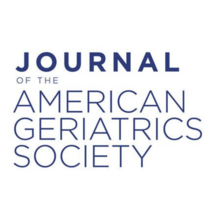BACKGROUND: The rapidly expanding digital health landscape offers innovative opportunities for improving health care delivery and patient outcomes; however, regulatory and clinical frameworks for evaluating their key features, effectiveness, and outcomes are lacking. Cardiovascular and mental health apps represent 2 prominent categories within this space. While mental health apps have been extensively studied, limited research exists on the quality and effectiveness of cardiovascular care apps. Despite their potential, both categories of apps face criticism for a lack of clinical evidence, insufficient privacy safeguards, and underuse of smartphone-specific features alluding to larger shortcomings in the field.
OBJECTIVE: This study extends the use of the MINDApps framework to compare the quality of cardiovascular and mental health apps framework to compare the quality of cardiovascular and mental health apps with regard to data security, data collection, and evidence-based support to identify strengths, limitations, and broader shortcomings across these domains in the digital health landscape.
METHODS: We conducted a systematic review of the Apple App Store and Google Play Store, querying for cardiovascular care apps. Apps were included if they were updated within the past 90 days, available in English, and did not require a health care provider's referral. Cardiovascular care apps were matched to mental health apps by platform compatibility and cost. Apps were evaluated using the M-Health Index & Navigation Database (MIND; MINDApps), a comprehensive tool based on the American Psychiatric Association's app evaluation model. The framework includes 105 objective questions across 6 categories of quality, including privacy, clinical foundation, and engagement. Statistical differences between the 2 groups were assessed using two-proportion Z-tests.
RESULTS: In total, 48 cardiovascular care apps and 48 matched mental health apps were analyzed. The majority of apps in both categories included a privacy policy; yet, the majority in both samples shared user data with third-party companies. Evidence for effectiveness was limited, with only 2 (4%) cardiovascular care apps and 5 (10%) mental health apps meeting this criterion. Cardiovascular care apps were significantly more likely to be used in external devices such as smartphone-based electrocardiograms and blood pressure monitors.
CONCLUSIONS: Both categories lack robust clinical foundations and face substantial privacy challenges. Cardiovascular apps have the potential to revolutionize patient monitoring; yet, their limited evidence base and privacy concerns highlight opportunities for improvement. Findings demonstrate the broader applicability of the MINDApps framework in evaluating apps across medical fields and stress the significant shortcomings in the app marketplace for cardiovascular and mental health. Future work should prioritize evidence-based app development, privacy safeguards, and the integration of innovative smartphone functionalities to ensure that health apps are safe and effective for patient use.



